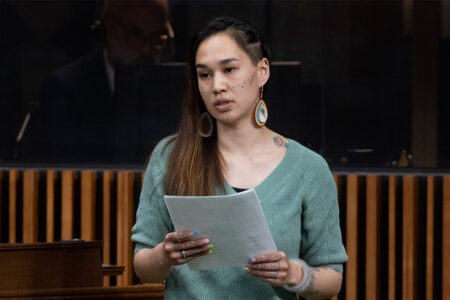
In movies about political campaigns, we often see a character who whispers in a politician’s ear, providing strategic advice about what to say to the media or what information to conceal from the leader. We wonder: who are these strategists? In Canadian politics, such senior advisors to the leader, also referred to as ‘political leads,’ help to shape the leader’s image in a sociopolitical context where there are challenges and where a campaign is simultaneously a short and a long period to manage issues, images and electoral events.
The senior advisor is the last voice in the leader’s head before events and media scrums while on a campaign tour. The advisor reports to the campaign director and travels with the party leader at all times, providing constant feedback to keep the leader focused and on point. Image management takes up a substantial part of the advisor’s time. Since image encompasses every public utterance, movement, and interaction, a senior advisor must evaluate choices about how to present the politician to voters and the media.
Continuous feedback to the leader
Image management requires strategically mobilizing symbolic devices – visual and verbal – to provide shorthand cues to voters. Branding, marketing, public relations, advertising techniques, and polling are then used to sell the candidate. Research shows that citizens look for specific leadership qualities; image and personality traits are significant voting determinants. During and between election campaigns, every aspect of a leader’s life is leveraged to manage their image, including style, character, public and private life. Voters assess leadership abilities, looking for qualities such as honesty, intelligence, friendliness, sincerity, responsiveness and trustworthiness. Political leads play a crucial role in helping the leader project these qualities.
Senior advisors need to have experience in all aspects of campaigning: strategy; research/polling; audience and targeting; messaging; and tactics like voter contact, fundraising, media relations, and social media. They consider questions such as: Is our message coming through in our leader’s images and words? What are audiences hearing from us, and is it resonating? What helps us define what the election is about? They use the answers to these questions to give continuous feedback to the leader.
What does it take to become a political lead, which is among the most senior roles of a campaign? Years of experience managing people and understanding the psychology of leadership are key elements. That experience might include working for years as a local campaign organizer, as a staffer to elected politicians, as a communication or advertising person, or as staff for leaders on their campaign bus. Academic studies may help the senior advisor acquire the tools to analyze what makes politicians successful. They can also develop the necessary skills by examining past Canadian and U.S. campaigns to find examples of what works and why. Those who are curious about voters’ desires and concerns will be better able to connect with them and understand how they see the choices governments make. Drawing on that experience helps the political advisor earn the trust of the leader and campaign director.
Highlighting a leader’s strengths
It is a powerful position, having influence on the leader’s headspace and performance. The job is not about knowing the most about policy or breaking news; it’s more about relationships and confidence. Senior advisors must embody the campaign message since they are the liaison between the war room, the leader’s tour, and the leader. Advisors accompanying the leader’s tour relentlessly ensure the leader is delivering the campaign message to reporters and voters every day. When whispering in the leader’s ear, these advisors are always thinking about managing impressions and the leader’s presentation of self. The overall goal of political image-making is to generate, maintain, sharpen, and strengthen favourable perceptions among the public in order to affect their personal political attitudes and, by extension, decision-making in strategic ways.
Before the campaign, political leads work with the rest of the strategy team to manage impressions and craft a solid message about the strength of their leader. Image management helps generate confidence and highlight the leader’s best features. Politicians all have their own style, a unique background, communication skills, and motivations for being in politics. The political advisor must factor in this information when planning the leader’s tour and contemplating how to highlight the leader’s strengths.
The leader’s attributes are thoroughly studied by the campaign team before the campaign begins. In focus groups, citizens are asked what they think about all the leaders. This information offers a distilled look at the public’s view of what each leader has to offer. It generates impressions of the perceived strengths and weaknesses of both them and their opponents. Current advice suggests that leaders lean into what makes them different, so senior advisors must keep the contrasts in mind when presenting the leader and trying to shift citizens’ perceptions. During this crucial period, the political advisor and the campaign team find a strategy for using the leader’s strengths to shape the story of the campaign. The advisor tries to make both the team and the media see the election in a certain way. This strategy is in line with the adoption of political marketing tactics in recent campaigns in order to modernize the party’s brand.
Activities intensify during the campaign. The political lead supervises and coaches the leader and can influence what the politician wears, says and does at events, interviews and scrums; and how the politician interacts with citizens and the media while on tour. The political lead plays a crucial role in “shaping and recalibrating campaign messages, selecting campaign tour stops, making sure their candidates put their best foot forward – and sometimes cleaning up when they put out the wrong foot.”
On the campaign trail, every detail is considered, from the politician’s words in speeches to the locations visited or the features of the politician’s private life shown to the public. Time, money, and energy are expended to present candidates in the best possible light, offering voters an appealing package without revealing how it was crafted strategically.
The calming coach
A political lead’s job is complex. It entails making decisions that result in attempting to convince voters to elect their leader. The lead keeps the chaos of campaigning out of the leader’s thoughts, aiming to maintain focus and simplicity. Leaders rely on their team to deal with both small and big matters. Imagine what it is like, during an election, where attacks are coming from every direction and the media is covering the campaign as if it were a boxing match. Social media platforms amplify this impression. Leaders should not be in the thick of things, but free to focus in order to perform well. The political advisor’s coaching makes the leader feel secure in the message—which, in turn, makes the leader appear authentic, an important aspect of modern politics.
Being a political leader is different from of being a local elected representative. Leaders continuously receive intense doses of feedback from all directions, including colleagues, media, and people on the street. They rely on strategists like political advisors to sort out the often confusing and contradictory opinions about image and performances, which has the potential to weaken a leader’s confidence. Leaders are also coached to improve their focus and discipline. Since they interact with the media daily, there is a high risk of the campaign being derailed if the leader says something wrong. Consequently, message and image management are key concerns throughout the campaign.
Choosing the proper framing
In the 2019 federal election campaign, race was a factor for NDP leader Jagmeet Singh as the first racialized leader to run for prime minister. To some Canadians, this caused a barrier to understanding. He and his team had to overcome preconceived notions of who he was and what he believed. The NDP knew that Singh would be a tough sell in Quebec since the province had just passed Bill 21, which prohibits public servants in position of authority – like teachers, judges and police officers – from wearing religious symbols. Focus group research told the NDP that Singh’s values were seen positively, but party strategists needed to demystify Singh’s “turban and the religious orthodoxy they felt it represented.”
In response, Singh followed the common practice of publishing a memoir. This allowed him to present and demystify himself as a person – telling the story of his family, his struggles and his resilience. The book demonstrated that Singh’s values were aligned with that of his party and with those of many Canadians.
The campaign team worked to make Singh’s differences a strength, not a weakness. It became part of their messages and ads: Want a different result? Make a different choice. The senior advisor and the strategic communication team worked during the campaign to frame Singh’s differences as a force for doing politics differently. Party ads showed how Singh puts on his turban; scenes of him in a boxing ring and out in nature. The ad’s message was that Singh wanted to fight for Canadians in the same way he has had to fight all his life. The ad was an important strategic move: it allowed the NDP leader to frame the question before he was framed by it.
After the campaign, political advisors and other campaign operatives engage in post-mortems to examine successes and failures. They look at how they presented issues to voters and evaluate which tools were useful, what kind of framing resonated or not with their targeted voters. They assess the veracity of their assumptions during the campaign. They analyze the polls and see whether their projections were right or not. They reflect on both the tools (e.g., traditional media, advertising, social media platforms) and the packaging of the message. They consider the way they were able to reach specific segments of the population, such as the success Singh enjoyed by lip-syncing on TikTok, a social media video app. Media fragmentation, regionalism and the diversity of opinions and population are among the many reasons that it is challenging to convey a desired message to target audiences. Thinking about communication strategies means evaluating narratives and how they reach – or fail to reach – specific parts of the population. Using humour shapes the narrative in a different way and can grab the media’s attention.
Image management doesn’t stop at the end of the campaign. Lessons learned from analyzing the campaign data help make adjustments for the next campaign. Senior advisors on the leader’s tour prepare for the next campaign by considering the response to how messages were framed and delivered. The next time that they whisper in the leader’s ear, their guidance will be grounded in their most recent campaign experiences and lessons learned, providing yet another source of counsel from the leader’s retinue of image managers.
This article was written with the assistance of Marie Della Mattia, a political strategist with over 30 years of experience. She was the lead political advisor on NDP Leader Jagmeet Singh’s 2019 election tour.
This article is part of The Insider’s View Behind the Scenes of Election Campaigns special feature.









